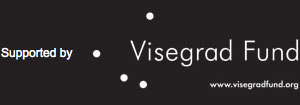Roundtable on the options of energy efficient transport of Tata
The topic of the roundtable meeting was to reveal the obstacles of improving the energy efficiency of the transport of Tata, and also, to find solutions for the identified problems. For this aim, local stakeholders on the field of transport, representatives of the local council, experts and NGOs were invited and participated on the event (the list of participants can be found at the end of the report).
Results of the meeting
The roundtable can be considered successful, as many problems and obstacles were revealed, and in most cases, common conclusion was made on the possible solutions.
Problems
The main problem in the transport of Tata is the fragmented city structure. Several main arterial roads cross the city, as well as the railway also cut the city into two parts. This circumstances result in a situation in which the energy efficient, environmentally friendly solutions cannot, or can hardly prevail.
Although Tata posses the title of “Bicycle friend city” since 2008, the situation hinder the construction of bicycle roads: due to the spatial need of the traffic on the crossing roads, wide roads were constructed, so there were no space was left for bicycle roads or pavements. The high number of the crossing vehicles means pollution and other problems also for the city. Walking is also hindered due to these circumstances.
As of the three railway crosses two are level crossings, it causes a severe problem as well. In these two crosses, cars have to wait many times 10-20 minutes for passing through.
The city cannot solve this problem on its own: the roads and the railway are owned by the state, not the city, so not just financing and decision making is beyond the city.
While many people work in Budapest, there is also a shortage in P+R parking and in bicycle racks at the railway station, which possibly contributes to the unjustifiably high share of car use.
The station of the intercity bus is in the inner city. This results in traffic that partly could be avoided if the station would be built closer to the railway station.
Some of the lines of the public transport are also not satisfyingly used: this is mainly due to the schedule of the railways, which basically determines the schedule of the bus lines.
Solutions
The bypass road, which could solve the problem of the crossing traffic, is still missing. The city took part in the preparation works with preparing a study, and succeeded in lobbying the plan into the national development plan. The construction of the bypass road would vastly improve the conditions of bicycling and walking.
The problem of the railway crossings will hopefully be solved in the next years, as the development of the railway line is planned by European finance. The level crossings will be ceased, with an underpass and an overpass.
The intercity bus station will be moved to the main railway station, where, according to the plans, an intermodal transport hub will be constructed, with P+R parking, and bicycle racks.
The plan of the development of the bicycle infrastructure will be introduce to the city council this year.
Participants of the Roundtable meeting
Name | Organization |
Gáborné Tene | Tata Council |
Lóránt Horváthy | Deputy Major, Tata Council |
Zsuzsa Takács | Federation of Technical and Scientific Societies |
Zsuzsa Teveszné Albu | Transport Authority, County Office |
Tamás Molnár | Transport Authority, County Office |
Józsefné Illés | Vértes Volán Ltd. |
Péter Fónyad | Városkapu Ltd. |
Ádám Török | Budapest University of Technology and Economics |
András Perger | Energiaklub |








